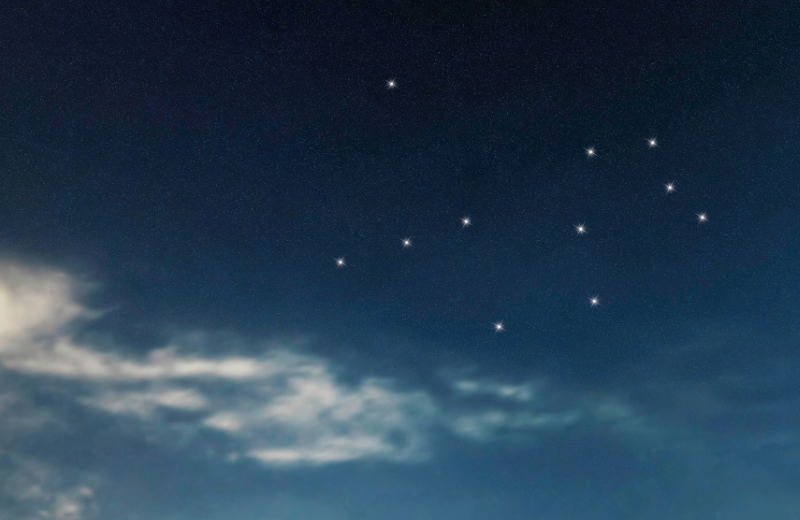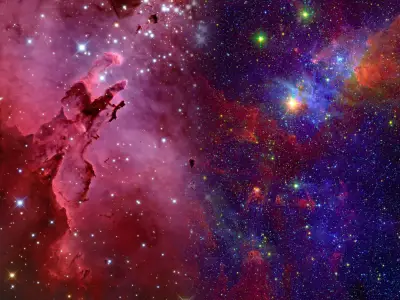For anyone fascinated by constellations, the Pavo constellation, or “the Peacock,” is a captivating subject. Whether you’re an avid stargazer or simply curious about the secrets of the universe, this guide will take you through everything you need to know about Pavo. We’ll explore its appearance, mythological background, and the best times to spot it in the night sky.
Jump to:
What is the Pavo Constellation?
Pavo, Latin for “peacock,” is a constellation found in the Southern Hemisphere. Named after the bird known for its magnificent plumage, Pavo represents the peacock in its splendour, spread out across the stars. The constellation is part of the southern celestial hemisphere, meaning it’s best observed from southern latitudes. It was first introduced by the Dutch astronomer Petrus Plancius in the late 16th century, as he charted the stars for navigation.
Pavo’s stars shine brightly, forming a shape that resembles a peacock’s fan, giving it an iconic and easily recognisable pattern. The constellation is positioned near other fascinating constellations like Indus and Telescopium, creating a vibrant section of the southern sky.
Recommended for you!
Best SellersWhat Does Pavo Look Like?
Pavo’s stars form a pattern that can be visualised as the spread feathers of a peacock. This fan-like shape is highlighted by its brightest star, Alpha Pavonis, situated prominently at the “head” of the peacock’s tail. The other stars of Pavo create an arc, suggesting the graceful curve of a peacock’s plume.
The constellation’s layout may not be immediately obvious without a bit of guidance, but once you spot Alpha Pavonis, the rest of the pattern becomes much easier to trace. If you’re using a star map or a telescope, Pavo’s structure appears even more intricate, revealing the beauty of this celestial “peacock.”

How Far is the Pavo Constellation from Earth?
The distance of a constellation is often measured by its individual stars rather than as a whole. Pavo’s main star, Alpha Pavonis (Peacock), is approximately 179 light-years away from Earth. To put this in perspective, light from this star takes 179 years to reach us, meaning the light we see today left the star long before the modern world existed.
Other stars within Pavo vary in distance, some closer and some much farther away, contributing to the constellation’s three-dimensional depth.
The Pavo Constellation Myth
The myth of Pavo ties back to the imagery of the peacock. In many cultures, the peacock is a symbol of beauty, pride, and immortality.
Although the ancient Greeks did not specifically link Pavo to their myths, the constellation is often associated with the legend of Argus, the giant with a hundred eyes, who served Hera, the queen of the gods. After Argus’s death, Hera honoured him by placing his eyes in the peacock’s feathers, symbolising watchfulness and splendour.
Pavo's Stars
Pavo contains several notable stars, each contributing to its beauty and distinctive shape. Here’s a look at some of the most important stars within this constellation:
- Alpha Pavonis (Peacock): The brightest and most famous star in Pavo. It’s a spectral type B star, shining with a blue-white light. Alpha Pavonis is also a binary star system, consisting of two stars orbiting each other. Its estimated age is around 200 million years.
- Delta Pavonis: A sun-like star studied for its similarities to our own Sun. It is an important star within Pavo for astronomers due to its characteristics.
- Beta Pavonis: Another bright component of the constellation, contributing to the structure and pattern that makes Pavo distinct in the southern sky.
Nebulae in the Pavo Constellation
Beyond its stars, Pavo is home to several fascinating deep-sky objects. These include the globular cluster NGC 6752, one of the oldest and brightest clusters visible in the southern sky. This globular cluster is located about 13,000 light-years from Earth and contains hundreds of thousands of stars, making it a dazzling sight through telescopes.
The Pavo constellation also features the spiral galaxy IC 4662, a bright and active galaxy where star formation is currently taking place. These deep-sky objects add to the constellation’s allure, offering stargazers the chance to observe cosmic events happening light-years away.

Finding Pavo in the Sky
Pavo is a southern constellation, best viewed from the southern hemisphere. To observe Pavo at its peak, the ideal time is during the southern winter months, from June to August, when it reaches its highest point in the sky, offering the clearest view.
Locating Pavo
To locate Pavo, start by identifying Alpha Pavonis, the brightest star in the constellation. From there, follow the arc formed by the surrounding stars, which resembles the fan of a peacock’s tail.
Pavo lies between the constellations Telescopium and Indus, making it easier to spot when these neighbouring constellations are visible. Using a star map or a stargazing app can further assist in pinpointing Pavo’s position in the sky.
Viewing Pavo with Binoculars or a Telescope
- With Binoculars: Even though some of Pavo's stars may be faint, binoculars can help bring out the pattern and allow you to trace its distinct fan shape.
- With a Telescope: A telescope provides a more detailed view, making it possible to observe features like Alpha Pavonis and other stars in Pavo with greater clarity.
Best Viewing Conditions
For the best experience, seek a location with minimal light pollution. A clear, dark sky on a moonless night will offer the optimal conditions to fully appreciate the beauty of the Pavo constellation.
Fun Facts About Pavo
- Pavo’s introduction: Pavo was one of twelve constellations introduced by the Dutch astronomer Petrus Plancius in the late 16th century, based on observations made during maritime expeditions.
- Alpha Pavonis: This star is named “Peacock” in honour of the constellation’s theme. It’s also a part of the navigation system for sailors, helping explorers navigate the southern seas.
- Globular Cluster NGC 6752: This cluster is estimated to be around 11 billion years old, making it one of the oldest clusters in our galaxy.
- Cultural significance: The peacock symbolises beauty and immortality in many cultures, aligning with the constellation’s elegant design.
Recommended for you!
Best SellersStudy Astronomy for £29
The Pavo constellation is a stunning and significant part of the night sky, offering beauty and rich history. If you're inspired to delve deeper into the wonders of astronomy, why not explore the Astronomy Diploma Course with Centre of Excellence? Whether you're a beginner or someone with more experience, this course will guide you through everything you need to know about the stars, constellations, and galaxies. And for a limited time, you can enrol for just £29!













